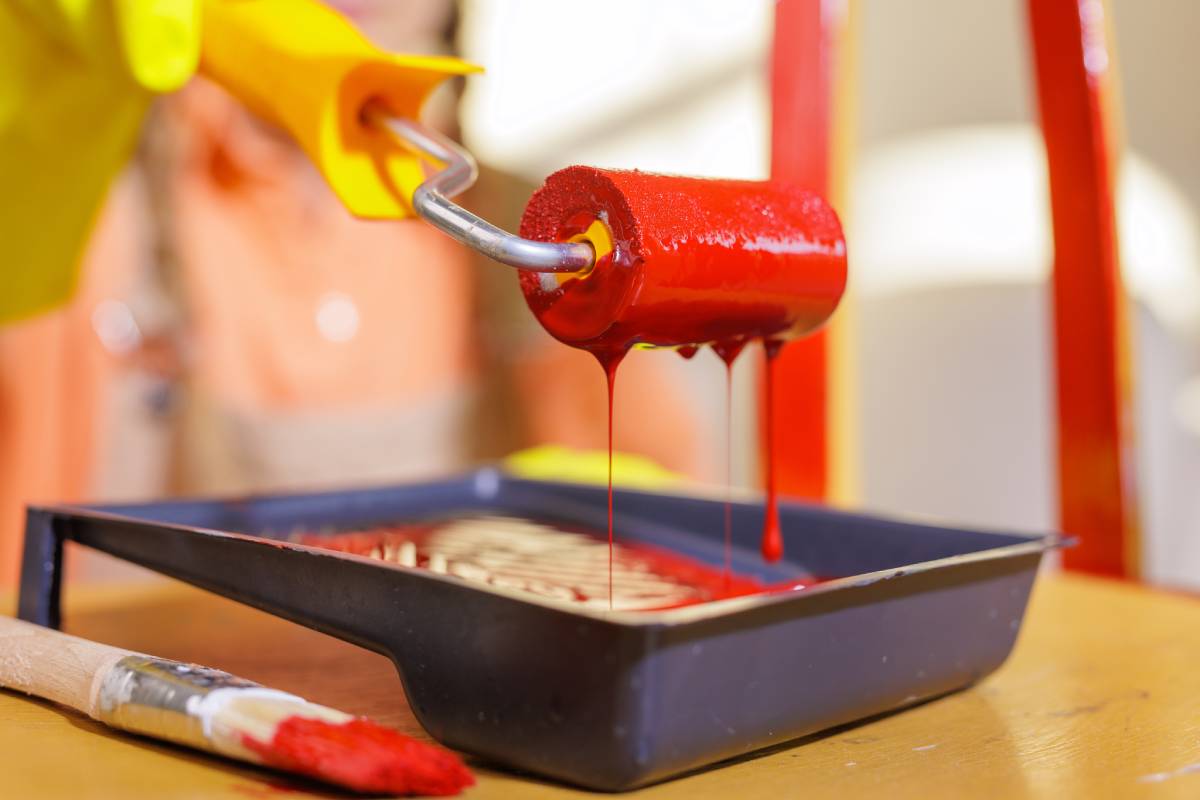What Is the Difference Between Intumescent Paint and Fire Retardant Paint?
When planning to build a house, there are countless factors that need to be carefully considered—from design, materials, and budget to sustainability and long-term maintenance. Among these, fire safety is one of the most critical yet often overlooked aspects. Understanding what should be considered before building a house goes beyond aesthetics and functionality; it also includes ensuring that the structure is protected from potential hazards like fire.
When it comes to protecting buildings from fire, coatings play an essential role in slowing down the spread of flames and maintaining structural integrity. Among the most commonly used fire-protective coatings are intumescent paint and fire retardant paint. While they may sound similar, these two types of coatings function very differently and are suited for different applications.
Understanding the difference between intumescent paint and fire retardant paint can help builders, architects, and property owners choose the right product for each surface—ensuring safety, compliance, and long-term protection.
In this article, we’ll explore what each type of paint is, how they work, where they’re best applied, and which one is ideal depending on your needs.
Understanding Fire-Protective Coatings
Before diving into the differences, it’s important to understand why fire protection coatings exist in the first place.
Buildings, especially those made with steel, timber, or composite materials, are at risk of structural failure during a fire. At high temperatures, steel can lose up to half of its load-bearing capacity, and timber can ignite easily if unprotected.
Fire protection coatings act as a first line of defence—they either prevent flames from catching or delay structural damage long enough for people to evacuate and firefighters to intervene.
Both intumescent and fire retardant paints fall under this broad category, but they use different mechanisms to achieve protection.
What Is Intumescent Paint?
Intumescent paint, sometimes called intumescent coating, is a special type of fire-resistant paint that expands when exposed to high heat.
How It Works
The word intumescent literally means “to swell up.” When this paint is exposed to temperatures typically between 200°C and 250°C, a chemical reaction occurs that causes it to expand up to 50 times its original thickness.
This expansion forms a thick, foam-like char layer that insulates the underlying material from heat.
Here’s what happens in simple terms:
- The paint softens as it heats up.
- Chemical ingredients activate, releasing gases that expand the coating.
- A charred layer forms, which acts as a thermal barrier.
This barrier slows the rise in temperature of the material underneath, giving vital extra minutes—sometimes up to 120 minutes or more—before structural damage occurs.
Common Applications of Intumescent Paint
Intumescent coatings are typically used where structural protection is essential. Some of the most common applications include:
- Steel structures – to maintain load-bearing integrity in case of fire.
- Timber beams and columns – to prevent ignition and slow charring.
- Concrete surfaces – to reduce cracking and surface spalling.
- Industrial buildings – warehouses, refineries, and factories.
- High-rise buildings – where evacuation time is critical.
- Because of its ability to maintain the strength of load-bearing components, intumescent paint is often specified by engineers and building certifiers to meet fire rating requirements under Australian and international building codes.
Types of Intumescent Paint
There are generally two main types of intumescent coatings:
- Thin-film intumescent coatings – typically used for architectural steelwork, offering up to 120 minutes of fire protection with a smooth finish.
- Thick-film intumescent coatings – designed for industrial or offshore environments, providing greater durability and resistance to corrosion.
Some formulations are designed for indoor use only, while others are weather-resistant for outdoor structures.
Benefits of Intumescent Paint
- Provides excellent fire resistance for structural elements.
- Helps buildings comply with stringent fire safety codes.
- Offers invisible protection—it looks like regular paint when applied.
- Can be applied to various materials, including metal, timber, and concrete.
- Extends the safe evacuation time during a fire.
However, it’s worth noting that intumescent coatings must be professionally applied. The correct film thickness, substrate preparation, and curing process are essential for it to perform effectively in a fire situation.
What Is Fire Retardant Paint?
Fire retardant paint, sometimes called flame retardant paint, works differently from intumescent paint.
Instead of expanding to form a char layer, fire retardant paint slows down the ignition and burning process by chemically interfering with the fire reaction.
How It Works
Fire retardant paints contain flame-inhibiting additives such as phosphates or halogen compounds. When exposed to heat, these chemicals release water vapour or inert gases that:
- Reduce the oxygen level around the surface.
- Form a protective barrier that prevents further burning.
- Inhibit the spread of flames and smoke.
- Essentially, while intumescent paint insulates, fire retardant paint suppresses flames and slows the spread of fire.
Common Applications of Fire Retardant Paint
Fire retardant paints are often used on non-structural surfaces where the primary goal is to limit the spread of flames rather than maintain structural integrity. Typical applications include:
- Walls and ceilings – particularly in public buildings or commercial spaces.
- Doors and furniture – made of timber or composite materials.
- Exit corridors and stairways – where flame spread control is crucial.
- Public venues – schools, theatres, hospitals, and shopping centres.
These paints are also common in domestic properties, providing an additional safety layer for walls, ceilings, or wooden interiors.
Benefits of Fire Retardant Paint
- Slows flame spread, giving people more time to evacuate.
- Reduces smoke development, improving visibility in emergencies.
- Can be applied to existing surfaces without major preparation.
- Available in various finishes—matte, gloss, or decorative.
- Ideal for interior walls, ceilings, and wooden fixtures.
However, unlike intumescent coatings, fire retardant paints do not provide structural protection. They are best used as part of a comprehensive fire safety system rather than a standalone solution.
The Key Differences Between Intumescent and Fire Retardant Paints
While both coatings serve the same goal—enhancing fire protection—they differ significantly in composition, purpose, and performance.
Here’s a clear comparison:
| Aspect | Intumescent Paint | Fire Retardant Paint |
|---|---|---|
| Main Function | Expands to form an insulating char layer, protecting structural materials from heat. | Slows flame spread and reduces smoke by releasing flame-inhibiting chemicals. |
| Reaction to Heat | Swells up to 50 times its thickness to create a thermal barrier. | Does not expand; instead, it suppresses combustion. |
| Best For | Structural fire protection (steel, timber, concrete). | Surface flame resistance (walls, ceilings, wood). |
| Fire Rating | Provides up to 30–120 minutes of fire resistance. | Delays ignition and reduces spread but offers limited fire rating. |
| Application Areas | Industrial sites, commercial buildings, high-rises, warehouses. | Homes, offices, schools, public venues. |
| Appearance | Smooth finish, can be painted over for aesthetics. | Decorative finishes available in various colours. |
| Maintenance | Requires professional inspection and recoating as per fire rating requirements. | Easy to maintain and reapply. |
In short, intumescent paint is about protection, while fire retardant paint is about prevention.
How to Choose the Right Paint for Your Project
Selecting between intumescent and fire retardant paint depends on your building type, materials used, and fire safety requirements.
Here’s a quick guide:
- Check Building Regulations
Australian and international building codes (such as AS 4100 for steel structures) may require specific fire ratings. If your project needs a certified fire resistance period (FRP), intumescent coatings are usually mandatory. - Identify the Substrate
- For steel beams, columns, and structural supports → Use intumescent paint.
- For wooden doors, ceilings, or plaster walls → Use fire retardant paint.
- Consider Aesthetic Requirements
Both coatings can be finished with decorative topcoats, but if appearance is a major factor, fire retardant paints often come in more colour options. - Assess Environment and Location
Outdoor or industrial environments may require thick-film intumescent coatings for added durability and corrosion protection. - Consult a Professional Applicator
Application thickness, drying time, and inspection are critical to ensure compliance and effectiveness. Always work with certified fire coating professionals.
Maintaining Fire-Protective Coatings
Even the best fire-protective paint won’t last forever if neglected. Regular maintenance ensures long-term safety and compliance.
Key Maintenance Tips:
- Inspect regularly for cracks, peeling, or damage.
- Recoat as recommended by the manufacturer.
- Avoid mechanical damage to painted structural surfaces.
- Ensure compatibility when applying decorative finishes over fire coatings.
- Keep detailed records of inspection and maintenance for compliance audits.
Common Misconceptions
- “Fire-resistant paint makes materials fireproof.”
– Not true. These coatings only delay ignition and damage; they don’t make materials indestructible. - “Both paints work the same way.”
– No. Intumescent paints expand to insulate, while fire retardant paints slow down burning. - “Any painter can apply fire coatings.”
– Incorrect. Intumescent coatings especially require trained professionals to ensure film thickness and fire rating performance.
Why Fire Protection Should Never Be an Afterthought
Fire protection coatings are more than just compliance tools—they can save lives and protect property investments. Whether for a commercial structure or a residential renovation, choosing the right paint can make a life-saving difference in the event of a fire.
Modern coatings offer not only safety but also aesthetic flexibility, meaning you don’t have to compromise on design to meet safety standards.
By understanding the difference between intumescent and fire retardant paints, property owners and builders can make more informed, responsible decisions that enhance both safety and longevity.
Final Thoughts
Both intumescent and fire retardant paints contribute to fire safety, but they serve distinct purposes.
- Intumescent paint provides structural protection, buying precious time before collapse.
- Fire retardant paint prevents flames from spreading, containing fires in their early stages.
The best choice depends on your project’s fire rating requirements, materials, and budget.
If you’re unsure which type of coating suits your needs, it’s best to consult with experts who specialise in professional application and compliance with Australian building codes.
For reliable advice and high-quality fire-protective coatings, trust Pro Plaster N Paint—your partners in safe, durable, and professional surface finishing.














Post Comment